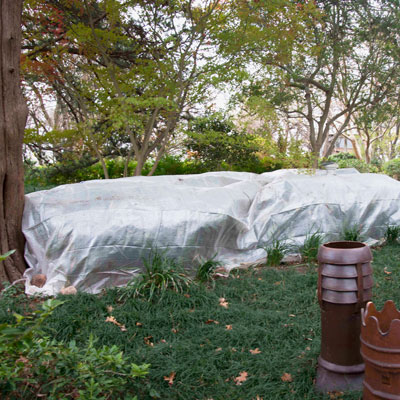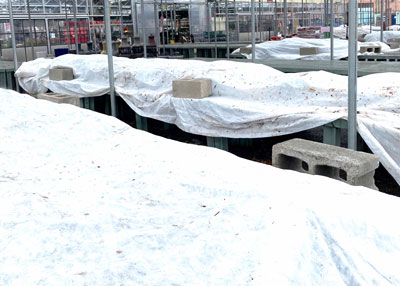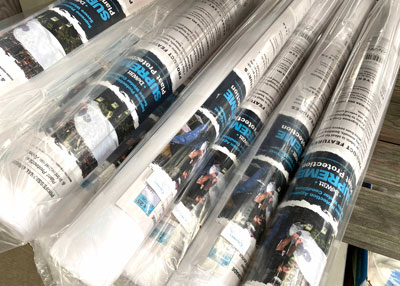Question of the Week – Number Two: January 6, 2022
“The cold came in so fast last week that I didn’t have time to look for frost cloth. What exactly am I looking for?”

I put a post up on Facebook urging frost cloth for pansies and other vulnerable winter color plants two days before the cold last week. I received all manners of replies. Here are samplings…
1. From many: “Thanks for the tips on frost cloth. It has saved my plants time and again.”
2. From some: “I’ve searched all the big box stores and I can’t seem to find any. They don’t seem to know what I’m talking about.”
3. From others, usually with bold confidence, “I’ve just used old sheets, burlap or blankets. They’ve served me very well.”
4. From many others, “I just cover my plants with plastic. I may even put a light bulb beneath it.”
Let me address those comments…
Here’s what I’d have to say in return.
1. To that first group, thanks for your confirmation of your successes in using frost cloth. Starting with vegetable growers and strawberry producers, its effectiveness at protecting against cold damage has been long-proven. And the proof has just expanded exponentially ever since.
It’s amazing for anything so lightweight, but frost cloth makes 8-10 degrees difference in cold survival of flowers and tender foliage. After last winter’s record February cold I received dozens of photos showing side-by-side comparisons of how it had saved plants that were covered.

2. Some national chains may now be handling frost cloth, but your odds are going to be best if you go to a local independent nursery, feed store or hardware store. Their buyers live right there in your city, and they hear from the people right there on the sales floor that you’ve been in asking for various products. They can react. They can stock things that pertain to your local needs.

3. As for people who want to use fabric products like old sheets, towels, blankets, bedspreads or burlap, don’t do it! Those materials soak up moisture and they get heavy. They weight down your plants, crushing and ruining them. Frost cloth doesn’t hold water, so it remains lightweight and free-floating. It also allows daylight and water to penetrate through it down to the plants, so you can leave it in place for weeks if you have to.
As for having a light bulb, heat strip, heating pad, electric heater – I’ve heard ‘em all – beneath the cover… Oh, my goodness. Forget that madness. That’s electricity, friends. It’s not safe, plus it won’t help all that much. The electric heater might, but it could burn up your plants, the sheets or your house. This just has “Bad Idea!” written all over it.
4. Polyethylene plastic (roll type) is a very bad idea. Our coldest nights are usually accompanied by clear skies. The sun comes out in the morning and quickly overheats the air inside the plastic “tents.” Plants warm up too rapidly and are quickly damaged by the freeze/thaw cycles. Many more plants are hurt by being covered by plastic than are helped. Just don’t go there.
